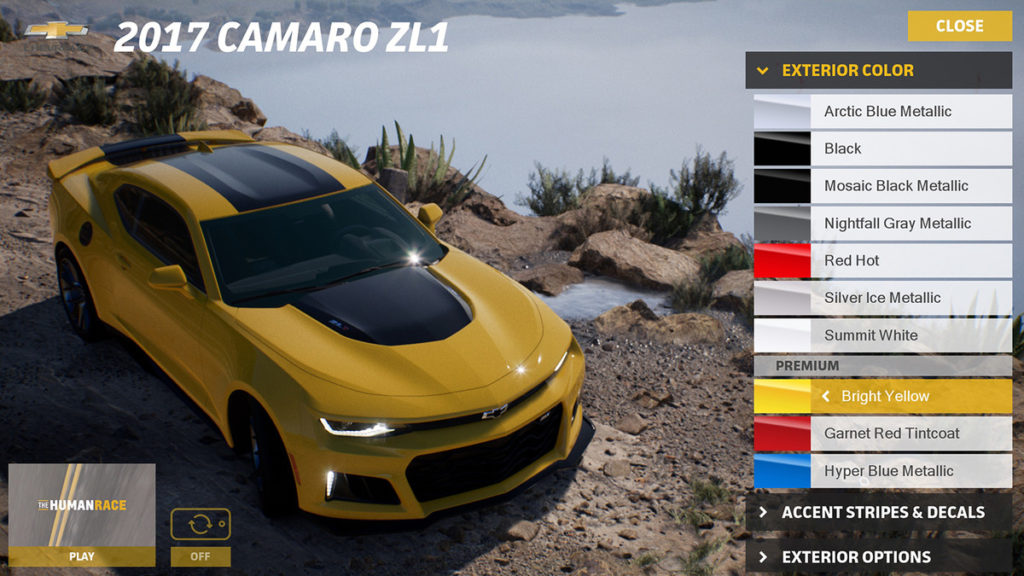Marc Petit, general manager of Unreal Engine enterprise business at Epic Games, previously spent his career at Autodesk building tools for content creators. Petit told [a]listdaily that moving to Epic was the next logical step for him.
Epic used the Game Developers Conference (GDC) this week to showcase non-gaming uses for Unreal technology. This year, Lucasfilm and Industrial Light & Magic showed off scenes from Rogue One: A Star Wars Story with K2-SO running on Unreal Engine 4. And The Mill and Chevrolet displayed an augmented reality Camaro race featuring real-time cars masked overtop a motion capture vehicle.
“The Epic brand is very strong and the technology is available to everyone—source code and and all,” Petit said. “We’re seeing a lot of adoption across different businesses. And we’re actually catching up on the customers who have adopted the technology. Ever since I’ve been here, every day we came across somebody doing something interesting with the technology.”
Petit said in the architecture industry, the high-quality money show used to be the video walkthrough of a new building. But now, people want interactive walkthroughs.
“They’ve been adding Unreal Engine to their pipeline to create this interactive content, mostly for VR,” Petit said. “A survey of the high-end architecture industry last October found that 10 percent of architects were using Unreal Engine to do this. And 30 percent of those surveyed said they’re evaluating it for use in production.”
Petit sees a lot of high-end work being done for the marketing of new real estate properties, like billion dollar towers in Mumbai or in New York. People now invest very large amounts of money creating immersive, interactive experiences to sell their condos.

“There are a lot of projects that require public approval, like transport for London where they want to create a highway for bicycles,” Petit said. “You have to market the idea to your constituents. In the past they would have done that with video, but now they create interactive content so that people can actually see what it will look like before any work has begun.”
Epic is seeing a parallel tract to the advent of computer graphics. Today, people are migrating and upgrading to real-time interactive and VR.
“The automotive industry was always an early adopter of computer graphic technology, and last year, we showed our work with McLaren on design validation at GDC,” Petit said. “We’re talking to all of the automobile manufacturers because with cheaper game technology and cheaper VR headsets, they want to deploy their interactive content much more deeply. They do this at several key places in their product development cycle: design, validation and approval. At the design stage, you can throw a car into an environment in real-time and get a good sense of what it’s going to be like.”
Today, McLaren is using UE4 in VR to enable collaborative reviews between team members in their design centers in California and around the world. This can span into manufacturing work, looking at individual parts and creating the tools for those parts.
Epic’s game engine is also at the heart of the revolution about how companies want to sell cars and the global appetite for built-to-order vehicles. GDC 2017 featured a prototype Chevrolet car configurator, but McLaren’s just launched an Unreal car configurator in New York City that runs on a 70-inch touch screen TV to help sell $300,000 cars. They also have a VR version, but Petit believes the social nature of selling a car will focus on the big screen for now.
“When you look at a movie screen from afar it’s very different than being next to the sales guy configuring your car,” Petit said. “You get to see the content, so the quality bar is very high.”
Another area car companies are turning to Unreal for is built-to-order workflows. Now that Tesla is selling cars online, other manufacturers are trying to follow suit to avoid pre-building cars and sending them to dealerships only to have them sit in the parking lot there for a long time.
“We’re seeing very similar trends in trains, in private jets, everywhere in transportation where you have built-to-order,” Petit said. “And it goes beyond the aesthetics. It’s about short-circuiting the old ordering process because they connect Unreal to their SAP system. So it’s actually a real built-to-order management system. When you buy a $50 million jet, I’m sure you have a lot of expectations ahead of time.”
Unreal has also been used by Mattel to make Barbie relevant to GenY girls. The engine was used with Faceware to create a weekly eight-minute-long Vlog series on YouTube. The series took off, attracting over 1.5 million subscribers. That helped Mattel increase sales of the doll by 11 perecent.
“Before Barbie was just a plastic doll that mom had, but when you see the new face generator we debuted at GDC, she feels like a Disney character talking to you in this setting,” Petit said.
Epic also worked with Hasbro at a press conference to debut the new Mr. Monopoly Live Facebook game. They brought Mr. Monopoly to life to interact with the audience on social media using a motion-capture actor feed into the Unreal Engine.

